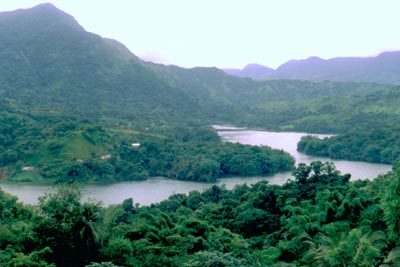- Lomas de Lachay
Infobox_protected_area | name = Lomas de Lachay National Reserve
iucn_category = Ia

caption = Lomas de Lachay
locator_x =
locator_y =
location =Lima Peru
nearest_city =
lat_degrees =
lat_minutes =
lat_seconds =
lat_direction =
long_degrees =
long_minutes =
long_seconds =
long_direction =
area = 520,7 km²
established = 1977
visitation_num =
visitation_year =
governing_body =The Lomas de Lachay is a national reserve in the foothills of the
Huaral Province in Lima. The reserve is located 105 km (65 miles) north from the capitalLima and features a unique mist-fedecosystem of wild plant and animal species. The National Reserve of Lachay was establishedJune 21 ,1977 by means of Supreme Law #310-77-AG. It expands across an area of 520.7 square kilometres. Its main purpose is to restore and protect the ecosystem of theLomas de Lachay (Lachay hills).The hills are a result of a combination of coastal climate factors, and subject to a peculiar
geography . They originate from the primary spurring of theAndes , a location where they contact the clouds which cover the area the majority of the year. There are two distinct seasons in Lachay: the humid season (which is the most important), from approximately June to November and the dry season, from December to May. The first season is emphasized due to its ability to give life to the green vegetation and attract the fauna of the region, while the second season is noted for presenting a drying process which ends when the firstfog appears in the fall.In the Lomas de Lachay (Lachay Hills) there are 74 plant species registered, among them 25 are on their way to extinction. Among the most notable, you will find the
Peruvian papaya ("Carica candicans "), "Capparis prisca ", "Caesalpinia tinctoria " and the nettle "Loasa urens ", which cover the reserve with yellow attractive flowers. Also, you can observe numerousgramineous ,tillandsia s andsucculent s.The common mammals found here are the
rodents , but you can also find other species like theSechuran Zorro (fox) ("Pseudalopex sechurae"), theAndes Skunk ("Conepatus rex"), the mountain mouse ("Phyllotis " spp.) and thevizcacha ("Lagidium peruanum").Throughout the reserve there exists approximately 55 bird species pertaining to 16 families, among them are: the
Burrowing Owl ("Athene cunicularia"), theAndean Tinamou ("Nothoprocta pentlandii"), theAmerican Kestrel ("Falco sparverius peruvianus") and diverse species ofhummingbird s.Among the most notorious reptiles, you can observe the
Peruvian snake ("Bothrops pictus") and theCurl Tail Lizard ("Tropidurus " sp.). There are also manyarthropod s.In the reserve you can find archeological paintings and remains from the Pre-Columbian cultures. At the same time, you can appreciate the huge
granite anddiorite rocks which have worn away over time leaving concavities and soft contours, which are of great geological interest.The primary objectives of the Lachay National Reserve are to restore and conserve the wild flora and fauna, perform research in order to use the hills rationally and encourage the recreation to be in harmony with nature.
Wikimedia Foundation. 2010.
